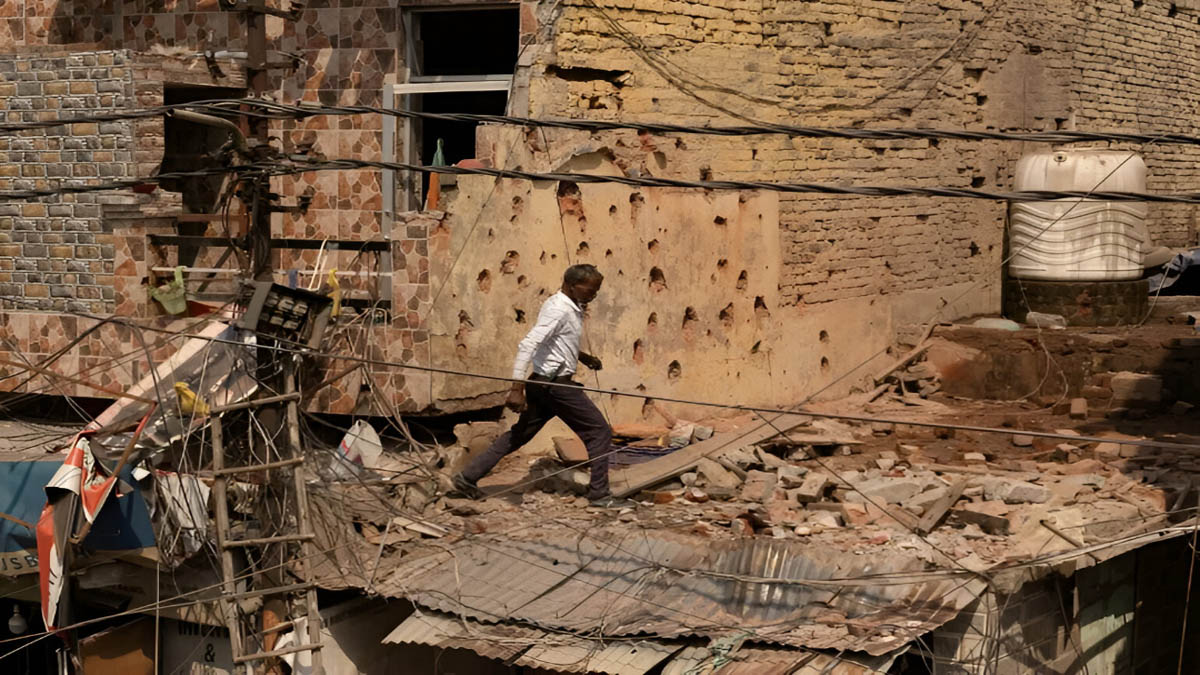Now Reading: Operation Bunyan Marsoos: Pakistan’s Retaliatory Response Amidst Escalating Tensions with India
-
01
Operation Bunyan Marsoos: Pakistan’s Retaliatory Response Amidst Escalating Tensions with India
Operation Bunyan Marsoos: Pakistan’s Retaliatory Response Amidst Escalating Tensions with India

In a significant and concerning development, Pakistan has announced the launch of a major military operation, codenamed “Bunyan Marsoos,” in response to what it claims are escalating acts of aggression by India. This operation, initiated on the morning of Saturday, May 10, 2025, follows a series of reported missile strikes by India on Pakistani airbases and comes amidst heightened tensions between the two nuclear-armed neighbors.
What We Know So Far:
- Pakistan’s Claims of Indian Aggression: Islamabad asserts that India has been carrying out attacks inside its territory for the fourth consecutive night. Specifically, Pakistan has accused India of launching ballistic missile strikes targeting at least three of its airbases: Nur Khan (near Rawalpindi), Murid (Chakwal), and Rafiqui (Shorkot, Punjab).
- Operation Bunyan Marsoos Launched: In response to these alleged Indian attacks, Pakistan’s military announced “Operation Bunyan Marsoos.” The name, an Arabic phrase meaning “a structure made of lead” or “solid cemented structure,” is derived from a verse in the Quran (Surah Al-Saff 61:4), often interpreted as a metaphor for unity and strength in the face of adversity.
- Targets of Pakistan’s Operation: While initial reports are still emerging, Pakistan has claimed to have targeted at least six Indian military bases as part of this operation. Some reports suggest these include airbases in Udhampur, Pathankot, Adampur, and Bhuj. Additionally, Pakistani media has claimed strikes on a BrahMos storage site, a brigade headquarters (“K G Top”), and a supply depot. These claims are yet to be independently verified.
- Tit-for-Tat Accusations: India, on its part, has accused Pakistan of being the aggressor, stating that Pakistani forces targeted several Indian military bases and that India’s actions were a response. Indian military officials have acknowledged “limited damage” to some of their airbases but have rejected claims of significant destruction, releasing photos to support their assertions.
- Escalation Beyond Kashmir: Critically, the reported targeting of military bases on both sides extends well beyond the disputed region of Kashmir, which has historically been the primary flashpoint between India and Pakistan. This geographical expansion of the conflict is a dangerous escalation, pushing the situation into “almost unknown territory,” according to some analysts.
- Use of Missiles and Drones: Both sides have reportedly employed missiles and drones in the recent exchanges. Pakistan claimed to have used its Al-Fateh ballistic missile in Operation Bunyan Marsoos. The use of long-range weaponry targeting military infrastructure signifies a dangerous shift in the nature of the conflict.
- Civilian Impact and Casualties: Alongside the military actions, there have been reports of increased cross-border shelling, particularly in Pakistan-administered Kashmir, resulting in civilian casualties and displacement. Authorities in the region have reported numerous deaths and injuries.
- Airspace Closure: Pakistan’s Civil Aviation Authority has announced the closure of its airspace from the early hours of Saturday until Sunday noon local time, indicating the severity of the ongoing situation and potential for further military activity. India has also reportedly suspended flights at several northern airports.
- International Reactions: Several world powers, including the United States, Russia, and China, have urged both India and Pakistan to exercise restraint and de-escalate the conflict.
Context of the Escalation:
The current crisis follows a period of heightened tensions, triggered by a deadly attack on tourists in Pahalgam, Indian-administered Kashmir, on April 22, which resulted in the deaths of 26 civilians. India subsequently launched “Operation Sindoor” on May 7, targeting what it claimed were terrorist infrastructure in Pakistan and Pakistan-occupied Jammu and Kashmir, in response to the Pahalgam attack. Pakistan condemned these strikes as an act of aggression.
Operation Bunyan Marsoos appears to be Pakistan’s forceful response to this chain of events, marking a significant and dangerous escalation in the long-standing conflict between the two nations. The international community is watching closely, with growing concerns about the potential for further conflict and the implications for regional stability. The coming hours and days will be crucial in determining the trajectory of this escalating crisis.










